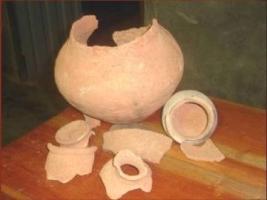Copy Link
Add to Bookmark
Report
Lambic Digest #0272

Lambic Digest #272 Fri 04 February 1994
Forum on Lambic Beers (and other Belgian beer styles)
Mike Sharp, Digest Coordinator
Contents:
ecology (Alex Crowe)
Secondary? (Jim Busch)
About Secondaries ... (Martin Lodahl)
Send article submissions only to: lambic at longs.lance.colostate.edu
Send all other administrative requests (subscribe/unsubscribe/change) to:
lambic-request at longs.lance.colostate.edu
Back issues are available by mail; send empty message with subject 'HELP' to:
netlib at longs.lance.colostate.edu
A FAQ is also available by netlib; say 'send faq from lambic' as the
subject or body of your message.
----------------------------------------------------------------------
Date: Thu, 3 Feb 1994 10:24:17 -0500 (EST)
From: Alex Crowe <crowe at medusa.bioc.aecom.yu.edu>
Subject: ecology
HI folks,
I want to thank everyone for being so helpful with this hapless beginner.
Your comments will all be taken into account when I start my brew (I have to
wait for a carboy to become available in the house). It seems to me that there
is in fact very little that every one does in common (at least you all add water
to the wort). THis brings me to the subject of the ecology of all the organisms
used to make a lambic. It seems that what happens is that there are many levels
of fermentation going on in the same batch and that the various organisms will
"bloom" at various times. Does this correlate with sugar usage? For example, does
the initial S. cerevisiae ferment die down when the monosaccharides are all
utilised to be followed by the Brettanomyces strains as they begin to break down
the complex carbohydrates in the unmalted wheat. DO the bacteria strains utilise
different sugars than the yeast, or is there a grand feeding frenzy on the
glucose and maltose? I've encountered a lot of literature regarding utilization
of D-xylose by lactic fermenting bacteria, is this an issue for lambics or a
more general food related issue (it seems that there is a lot of interest in
lactic fermeneters in keeping food fresh, the lactate must be inhibiting the
botulism causing organisms.)? The bacteria of choice seems to be Pediococcus for
lambics and lactobacillus for Berliner wiesse. How about the lactobacilli that
are used in yogurt production, can they be used in beers?
I look forward to your comments.
Alex
crowe at medusa.bioc.aecom.yu.edu
------------------------------
Date: Thu, 3 Feb 1994 11:32:52 -0500 (EST)
From: Jim Busch <busch at daacdev1.stx.com>
Subject: Secondary?
> From: abirenbo at redwood.hac.com (Aaron Birenboim)
> Subject: Primary?
> Brian Bliss said:
> >whether to add the pedio & brett in the primary or secondary...
>
> Secondary??? Is the collected wisdon calling for a secondary?
> I heard that the traditional lambic brewers go coolship to barrell to
> bottle. no secondary. What do you do, Mike? Martin?
>
Just a data point: At Oud Beersel they do primary in a large SS
tank, then cask it for a few years. I seem to recall this also
at Cantillion, but thats going back a few years. I do remember
the ouzing barrels at Cantillion being sealed with paraffin.
Jim Busch
------------------------------
Date: Thu, 3 Feb 1994 08:39:22 -0800 (PST)
From: malodah at pbgueuze.scrm2700.PacBell.COM (Martin Lodahl)
Subject: About Secondaries ...
In Lambic Digest #271, Aaron Birenboim replied to Brian Bliss:
> Brian Bliss said:
> >whether to add the pedio & brett in the primary or secondary...
>
> Secondary??? Is the collected wisdon calling for a secondary?
> I heard that the traditional lambic brewers go coolship to barrell to
> bottle. no secondary. What do you do, Mike? Martin?
The commercial producers do go from coolship to barrel, but then
rack to another barrel after "primary" fermentation is done. They
do this probably for pretty much the same reasons that we do:
to leave behind some of the crud. We have perhaps more
reason to do so, as the overnight stay in the coolship drops
out the trub very efficiently, so the beer going into the barrels
is quite clear. Nevertheless, it's going to be around a long time,
so another racking is a good idea. Another reason for them to
rack is that after the first and most active stages of fermentation
are over they wish to close the barrel to minimize mechanical
damage to the pellicle, as well as possible contamination. To
do this they place about 4 plies of corduroy over the rectangular
bung, then wedge it in place with a billet of wood. Primary
fermentation is done with the bung open and the froth pouring
out and running down the sides of the barrel, and as the foam
dries it forms a hard but porous closure over the bung, which
would have to be removed in order to use the more reliable cloth
closure. That would be very difficult to do without contaminationg
the beer, unless the beer were first racked to other barrels.
I've tried several variations on the "when to pitch" theme, including
pitching the Pedio & Brett separately in the secondary, together
in the secondary, and together along with the original yeast,
and am really not convinced that it makes a major difference.
Others may well have had a different experience.
- Martin
= Martin Lodahl Systems Analyst, Capacity Planning, Pacific*Bell =
= malodah at pacbell.com Sacramento, CA USA 916.972.4821 =
= If it's good for ancient Druids runnin' nekkid through the wuids, =
= Drinkin' strange fermented fluids, it's good enough for me! (Unk.) =
------------------------------
End of Lambic Digest
************************
-------























